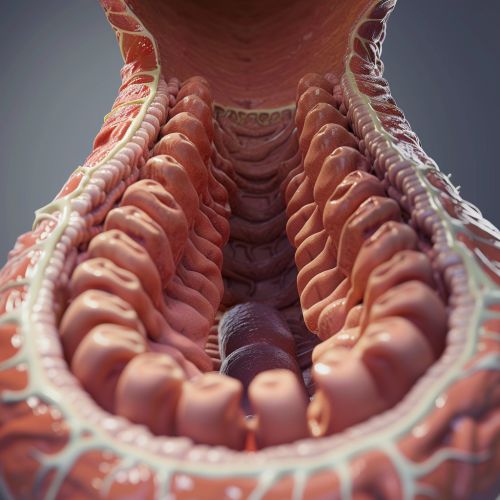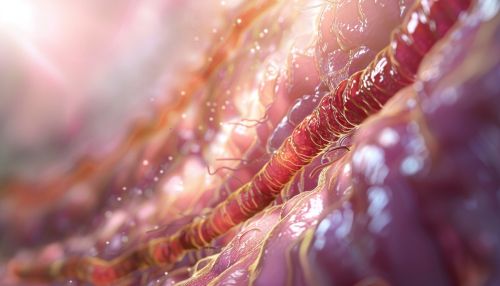Esophagus
Anatomy
The esophagus, also known as the gullet, is an organ in vertebrates which consists of a muscular tube through which food passes from the pharynx to the stomach. The esophagus is a part of the digestive system and is located behind the trachea and heart and in front of the spine. It is approximately 25 centimeters long in adults and is lined with mucous membranes.


Structure
The esophagus is divided into three parts: the cervical esophagus, the thoracic esophagus, and the abdominal esophagus. Each part has its own specific structure and function. The esophagus is composed of four layers: the mucosa, submucosa, muscularis propria, and adventitia. The muscularis propria is responsible for the peristaltic contractions that propel food down the esophagus.
Function
The primary function of the esophagus is to transport food and liquid from the mouth to the stomach. This is accomplished through a process called peristalsis, a series of wave-like muscle contractions that move food down the esophagus. The esophagus also plays a role in preventing reflux, or the backward flow of stomach acid, through the lower esophageal sphincter.
Disorders
There are numerous disorders that can affect the esophagus, including esophageal cancer, gastroesophageal reflux disease (GERD), esophagitis, achalasia, and Barrett's esophagus. These disorders can cause symptoms such as difficulty swallowing, heartburn, chest pain, and regurgitation. Diagnosis of esophageal disorders often involves procedures such as endoscopy, manometry, and pH monitoring.
Treatment
Treatment for esophageal disorders varies depending on the specific condition. This can range from lifestyle changes and medication for conditions like GERD to surgery for conditions like esophageal cancer. In some cases, such as with advanced esophageal cancer, treatment may focus on relieving symptoms and improving quality of life rather than curing the disease.
